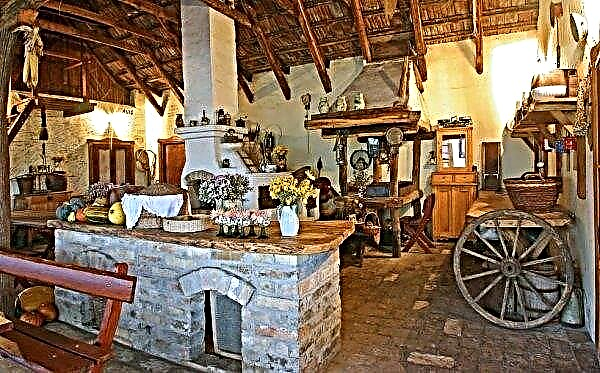When creating the landscape design of the estate, it is necessary to take into account the style and natural features of the courtyard. To give the site aesthetics and completeness, pave garden paths that connect buildings and estate objects. This article will discuss the types of paths, as well as the features of their layout and size.
Types of Garden Paths
Thinking over the layout of the site, it is necessary to carefully approach the planning of the location of the track segments along which you have to move. Garden paths are distinguished both by purpose and by the materials from which they are paved.
Did you know? Landscape design as an art originated in the territory of modern China over 30 centuries ago.
When choosing the construction components of the "highways", it is necessary to take into account the style of the entire garden plot, as well as real financial opportunities. Do not forget that the material must be durable and of high quality so that the track retains its appearance for many years.
By appointment
Garden paths by purpose are divided into the following types:
By material
It is also possible to classify the described landscape objects according to the materials used:
- gravel
- brick;
- from natural stones;
- concrete;
- from paving slabs;
- plastic;
- wooden;
- Dending (from garden parquet).
Did you know? In the French village of Giverny, a garden laid by Claude Monet has been preserved. On its territory were painted the paintings "Japanese Bridge" and "Pond with Water Lilies."
What to consider when planning a track
When planning and building paths, consider the following points:
- Draw a plan on which mark the beginning and end of the route.
- Lay utility lanes of optimal length so that the path to important objects is short.
- Avoid sharp turns and don't make paths too winding.
- Limit the number of garden paths (they should occupy no more than 15% of the total area).
- Calculate the length and width of the object correctly.
- Adhere to the general style of the suburban area.
- Use material that is specifically designed for garden paths.

Optimal size
When you have decided how to arrange the tracks on the site, you need to decide on their optimal size. The same width should be maintained along the entire length of the trail. It should be increased only on the outskirts of utility and residential premises.
Important! If no more than one person is supposed to move along the path at a time, then its width is allowed within 80 cm.
After you have been able to plan the routes, determine the width, taking into account the following architectural nuances:
- make the main path located between the gate and the country house, about 1.5 m wide. This is due to the fact that at least two people should be on it;
- pave the secondary paths (to the bathhouse, greenhouse, barn, etc.) narrower. The optimal width is 90 cm.
Often form paths passing through the garden. You need to place them between the beds so that during the movement do not touch the bushes located on the sides. If there is a corner in your garden where wild plants grow, then the paths should be no more than 60 cm wide. In order for the car to freely pass through the yard, the optimal parameters of the overpass are at least 300 cm. At the same time, you need to expand the areas intended for boarding the car: next to the garage, in front of the house, near the gate, etc. Pay due attention to technical passages, more precisely, to the blind area. The standard width for such paths is about 1 m.
At the same time, you need to expand the areas intended for boarding the car: next to the garage, in front of the house, near the gate, etc. Pay due attention to technical passages, more precisely, to the blind area. The standard width for such paths is about 1 m.
Important! Spread paths with a slope of 2%. This will allow water to drain onto the lawn rather than stagnate, creating mud puddles.
How to arrange tracks on a site
To correctly lay the tracks on the site, you first need to mark them on the plan. Try to take into account all the buildings that are in the country. The path leading to the main entrance must be placed along the longest route, giving the landscape element a “soft”, wavy shape. Thanks to this trick, it is possible to create an unusual design that resembles the design of historical objects. The norm for the route from the back door of the house to the barn is the direct path. This helps maintain the functionality of farm buildings. So, now you know how to rationally make garden paths on the site. These decorative elements not only help to move comfortably around the yard, but also make the territory more well-groomed, organized and presentable.
The norm for the route from the back door of the house to the barn is the direct path. This helps maintain the functionality of farm buildings. So, now you know how to rationally make garden paths on the site. These decorative elements not only help to move comfortably around the yard, but also make the territory more well-groomed, organized and presentable.












